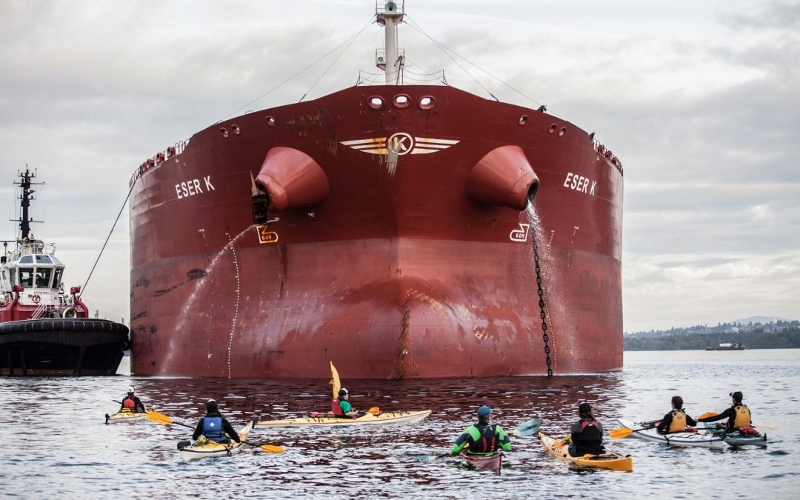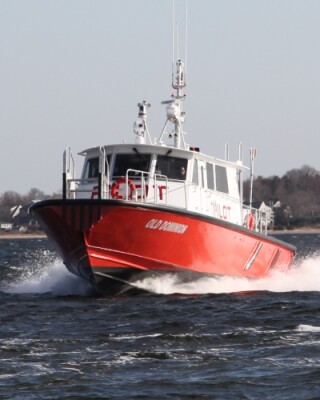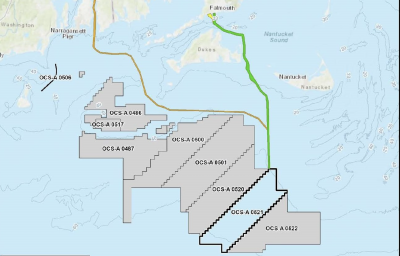A report warning of the dangers from moving heavy tar sands crude oil by tanker from British Columbia is a new salvo from the Natural Resources Defense Council, seeking to block the Canadian crude from U.S. maritime transport.
Titled “The Tar Sands Tanker Threat,” the paper asserts tanker and barge trips carrying bitumen crude could escalate 12-fold to 1,085 on U.S. waters in the early 2020s, depending on market conditions. It calls on Canadian and U.S. government regulators to reject present spill response plans, and undertake studies to assess the risks of moving bitumen crude.
NRDC authors stressed the difficulty in dealing with bitumen oil spills, pointing to the 2010 Enbridge Inc. pipeline break near Marshall, Mich. that spilled 840,000 gals. of diluted bitumen into the Kalamazoo River. It was the most expensive pipeline spill in U.S. history at $1 billion, and prompted a National Academy of Sciences report on the difficulties of cleaning up heavy oil that sinks.
Kinder Morgan has Canadian government support for expanding its pipeline capacity to the British Columbia coast, where bitumen could be shipped to U.S. refineries. Others could follow, an unsettling prospect for First Nation tribes, said Jewell James, a Lummi Nation representative and Salish Sea fisherman.
“It’s not just Kinder Morgan. It’s all the pipelines that could be coming across our river systems” and salmon habitat, James said in a telephone press conference Wednesday.
The Oct. 13 grounding and diesel fuel spill from the Kirby Offshore Marine tugboat Nathan E. Stewart near Bella Bella, B.C. heightened those worries, said Stephanie Buffum, of the Washington state environmental group Friends of the San Juan. Even cleaning up those relatively light diesel and lubricant oils proved to be a challenge in a response that lasted through the month, she said.
“We’re very concerned here about Canada’s ability to respond to a spill,” Buffum said. When Canadian and U.S. agencies review plans for new tanker transport, “spill response resources are not a means to mitigate risk,” she added.
The Bella Bella accident “ramped up the pressure on the (Canadian) government to do something about British Columbia’s spill response,” said Josh Axelrod, lead author of the NRDC report. But before that $1.5 billion commitment from Prime Minister Justin Trudeau, “they moved ahead with the biggest project they had anyway,” he said.
On the Columbia River at Vancouver, Wash., Tesoro Corp. and the Savage Companies propose a rail terminal that could add 122 tankers and barges carrying bitumen oil to the annual river traffic, along with 243 additional vessels carrying other types of oil, according to the NRDC paper.
A similar report from NRDC in July criticized the proposed 2,800 mile TransCanada Energy East pipeline that would move bitumen oil from Alberta to St. John in New Brunswick to be loaded on tanker vessels and transported to U.S. East Coast and Gulf of Mexico refineries.
The new report reiterates that opposition, and also to allowing bitumen oil to be transported from terminals at Albany, N.Y., and loaded on barges and tankers to be moved down the Hudson River for processing at destinations like the Bayway Refinery in Linden, N.J.
The Global Partners terminal at Albany now handles North Dakota Bakken crude oil that arrives by rail, and has a proposal, to add boilers to facilitate handling of bitumen oil, according to the NRDC report. There is potential for up to 124 additional barges shipped per year out of Global, the NRDC report says.





